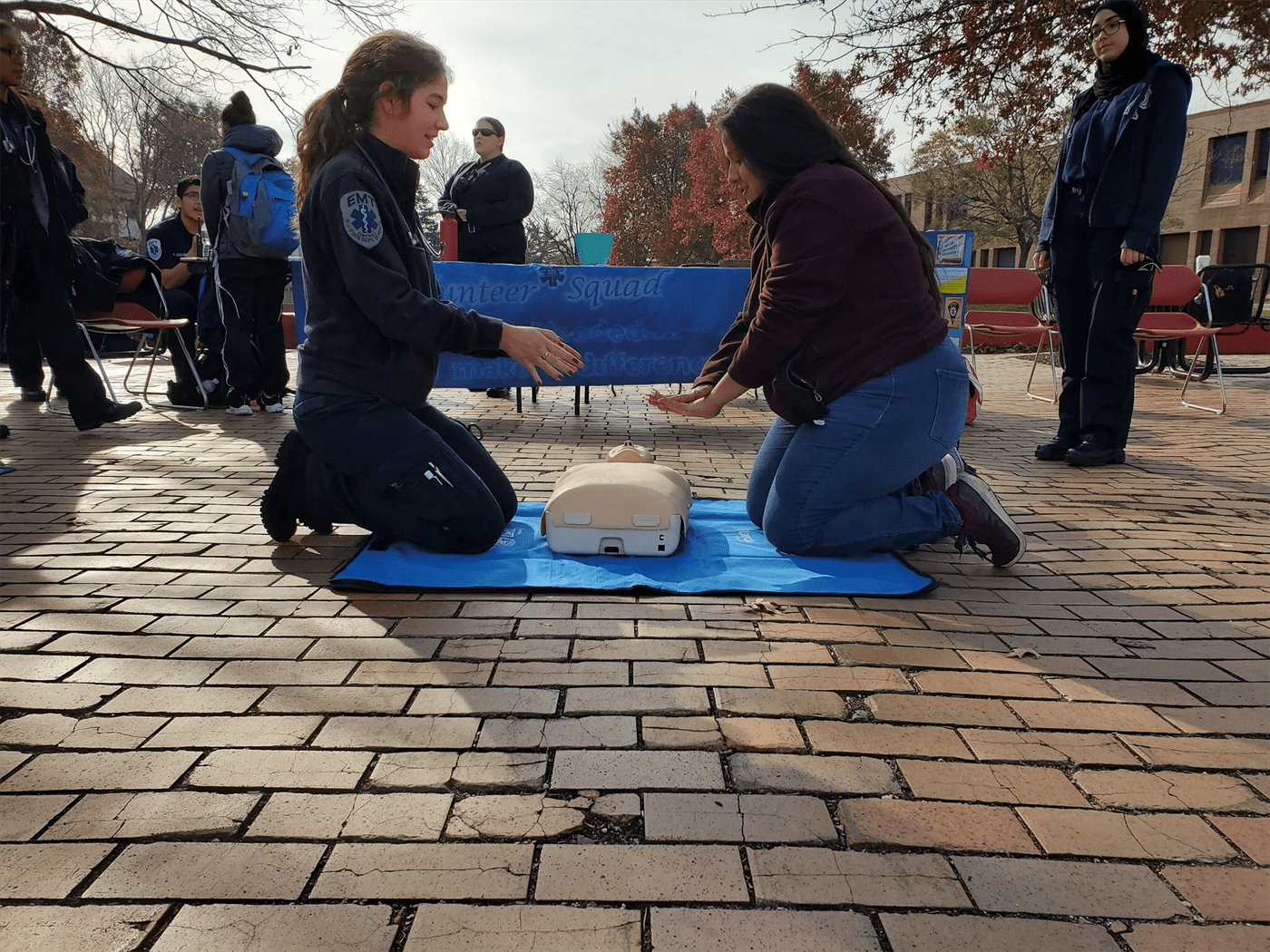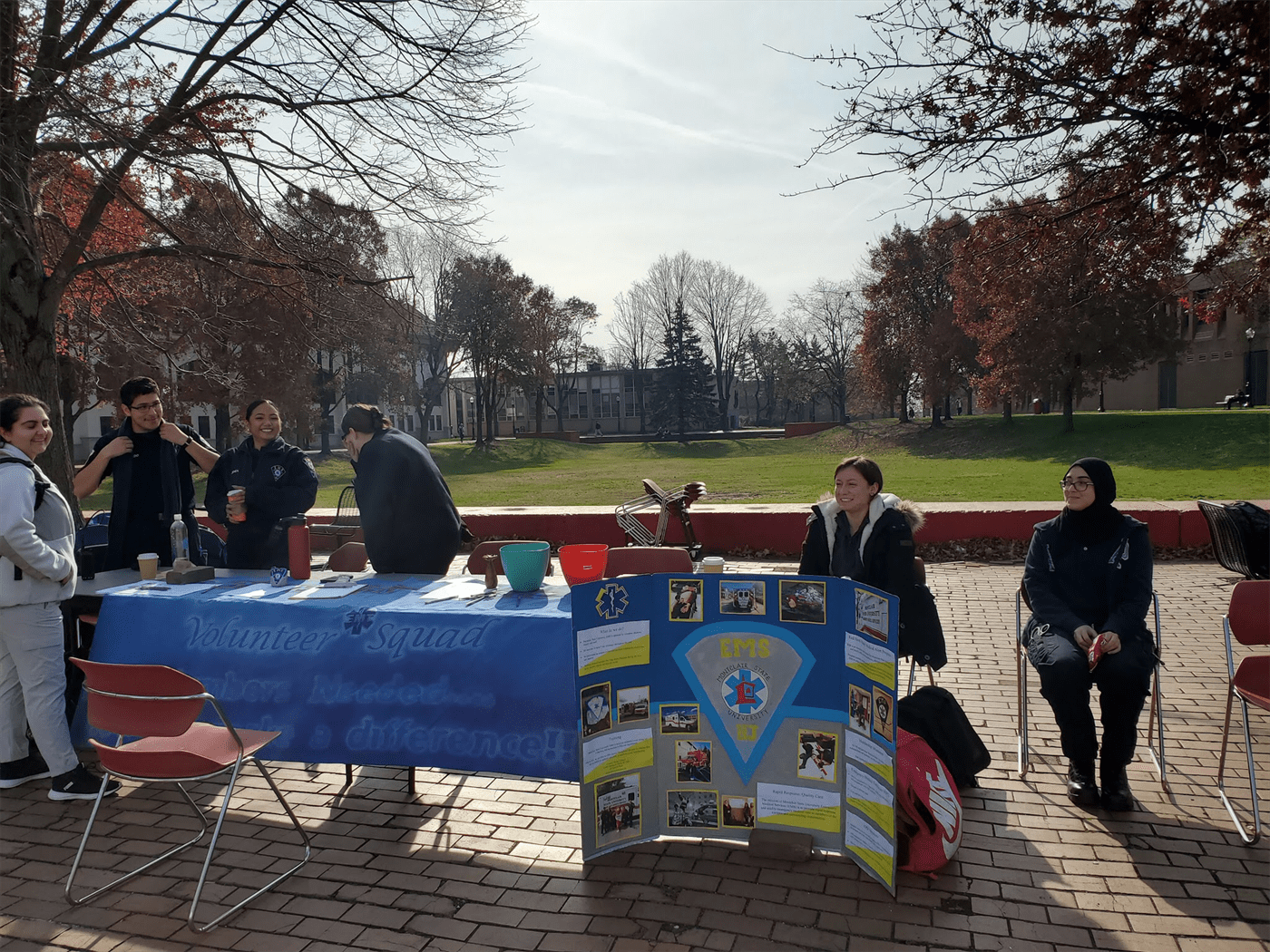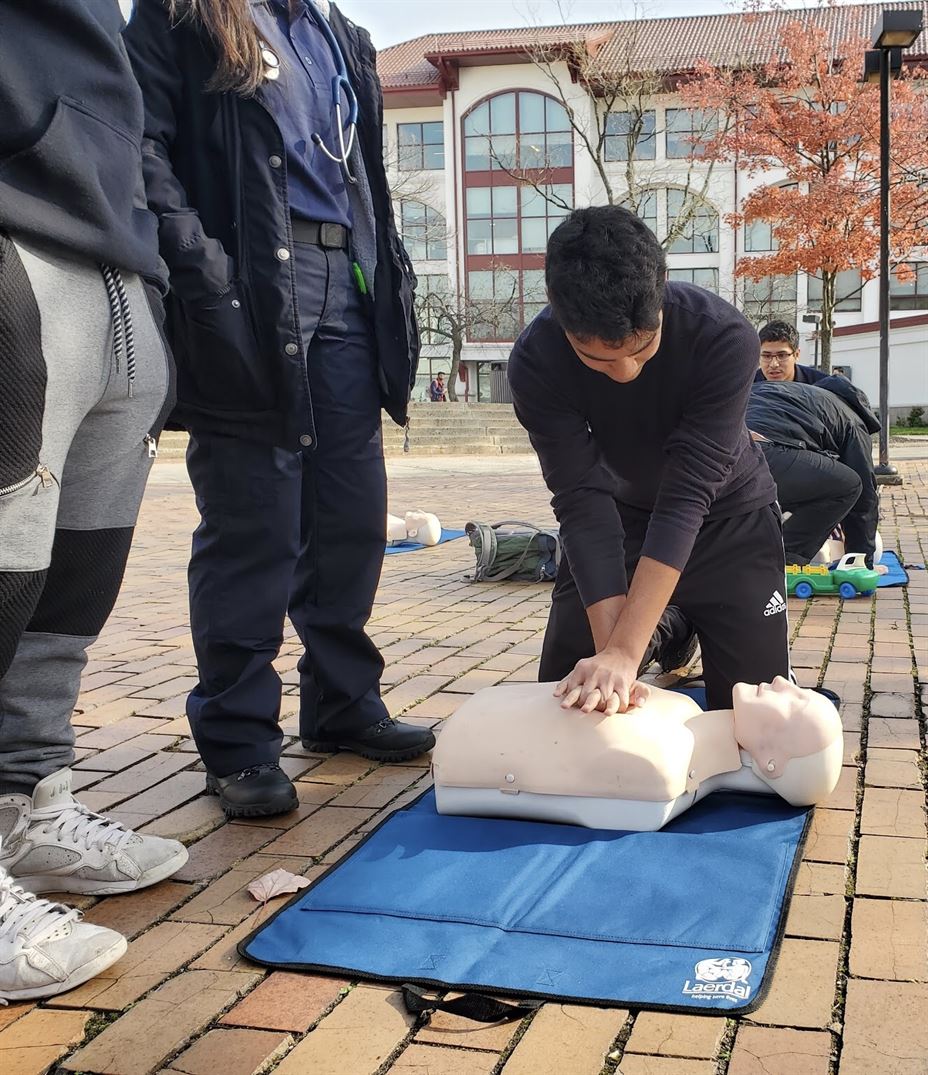Montclair State University Emergency Medical Services (EMS) volunteers hosted a full day of hands-on CPR training for Montclair State students outside in the Student Center quad.
The event was hosted from 9 a.m. to 6 p.m. on Monday, Nov. 11 in an effort to teach students the basic practices to follow when someone is experiencing cardiac arrest.
The EMS trained students to immediately call 911 and begin chest compressions, calling it “hands-only CPR.”
Jacqueline Lawrence, the director of Montclair State EMS, explained that roughly 350,000 cardiac arrests happen outside of hospitals each year, and that every minute that someone does not get CPR, their chances of survival decrease by 10%.
“The goal is to teach everyone the basics,” Lawrence explains. “Even if you are worried about doing mouth-to-mouth and stuff like that, at least by putting your hands and doing CPR on someone that needs it, you’re increasing their chance of survival.”

Samatha Decker (left), a volunteer Montclair State EMT, teaches Jessica Perez, a junior biology major, the basics of CPR.
Drew Mumich | The Montclarion
Jessica Perez, a junior biology major and babysitter of three kids, explains why CPR is important to learn.
“I think everyone should know CPR,” Perez said. “You never know when something is going to happen, and [if] you are going to need to help before the ambulance gets there or any professional help gets there.”

Montclair State’s Volunteer EMS talk to students about the importance of learning CPR.
Drew Mumich | The Montclarion
Renzovic Escobeto, a junior molecular biology major, has been a volunteer Emergency Medical Technician and field training officer with Montclair State for the last three years.
Escobeto explains the “Good Samaritan” law, which protects people who accidentally harm the person they are performing CPR on.
“For example, you are giving chest compressions, if you are pushing too hard you may break a rib or two, which is normal in CPR,” Escobeto said. “The ‘Good Samaritan’ law protects people that want to help and initially and intently have good faith in helping them.”

Mohamed Bankaslaittar, a freshmen biology major who is already CPR-certified practicing chest compressions.
Drew Mumich | The Montclarion
Freshman biology major Mohamed Bankasliattar, who was CPR-certified in high school, believes that learning CPR could benefit anyone on a college campus.
“Not only is CPR beneficial, but it can save a life,” Bankasliattar said. “It’s a big campus, you never know what could happen, if it’s in a class, in a dorm, somebody in the parking lot, it’s always a beneficial [skill] to have.”


